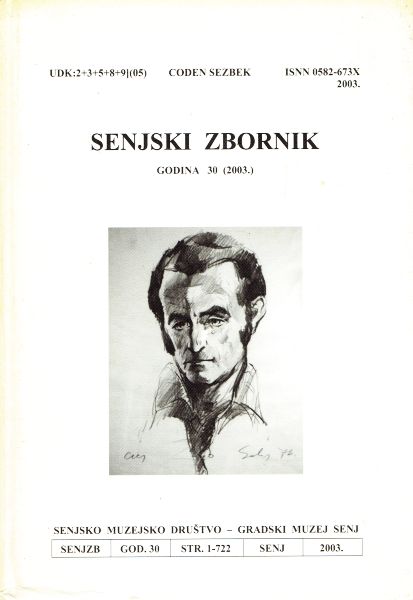O nekim osobinama sakralne arhitekture u Lici nakon protjerivanja Turaka
About Some Characteristics of Sacred Architecture in Lika after the Banishment of the Turks
Author(s): Zorislav HorvatSubject(s): Architecture, 17th Century
Published by: Senjsko muzejsko društvo i Gradski muzej Senj
Keywords: sacred architecture; Lika; Turks;
Summary/Abstract: The situation for building activities in Lika after the banishment of the Turks in 1689 was not very favourable. The re-establishment of the Catholic Church in the liberated parts of Croatia, such as in Lika, meant a total change of design, building programmes and daily needs. In important places in Lika, in Novi, Budak, Perušić, Bilaj, Kosinj etc. the parishes were established within a year after liberation but the building of churches required more effort. First built were wooden churches while in some places mosques were used. Nowadays we know almost nothing about these kinds of structures because there are almost no remains of the mosques. The mosque in Perušić was a rebuilt medieval Catholic church, which was its first function. The churches, which were built in 1700 didn’t last long because at the end of 18th century they were replaced with new churches built of cement. From some of the churches that still remain from 1700 (Kosinj, Gornji and Donji, Kosinjski Bakovac, Mušaluk) analysis shows that they were built on the foundations of medieval churches and even some architectural characteristic of those times were reused (Romanic and Gothic!). Characteristic baroque details from that period were very few and can only be seen in some methods of building i.e. windows and doors. The fronts of the churches from 1700 were repeating medieval forms. The bell towers of the churches in Gornji and Donji Kosinj were built at the front of the building, which is very characteristic of medieval churches in the same part of Croatia. The repetition of some medieval architectural forms shows that the builders were using the existing remains, positions and layout of medieval churches after the Turks left. The builders were without the necessary knowledge of contemporary baroque design. After 2-3 decades when the financial situation became better and after the re-organisation of the Military Border the contemporaneous building form was expressed.
Journal: Senjski zbornik - prilozi za geografiju, etnologiju, gospodarstvo, povijest i kulturu
- Issue Year: 30/2003
- Issue No: 1
- Page Range: 109-148
- Page Count: 40
- Language: Croatian

